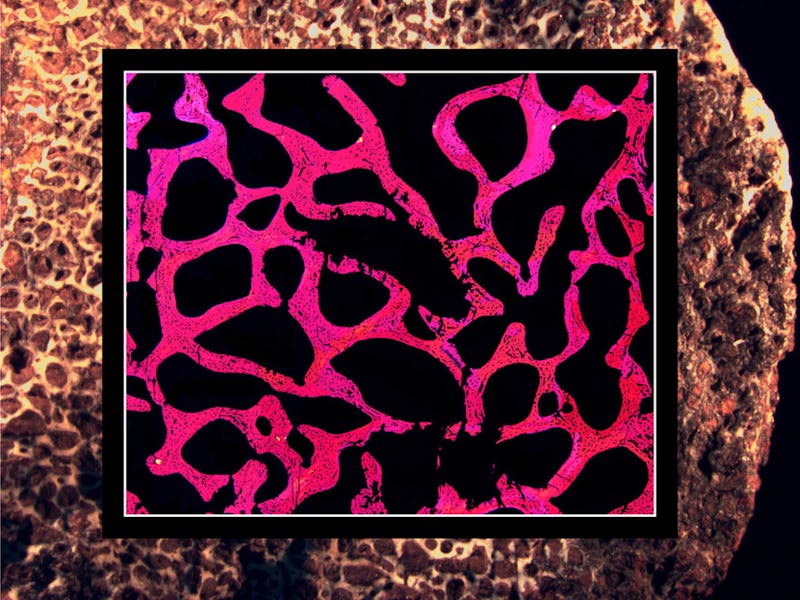The First Dinosaur Fossils Have Been Unearthed in Denali
We've known they were there for years, but they'd never been found.

For the first time, dinosaur fossils have been found in Alaska’s Denali National Park & Preserve. Researchers announced this week that a joint project by the University of Alaska Fairbanks (UAF) and the National Park Service led to the discovery of four fossilized bones, as well as trackways — paleontology-speak for dino footprints that became preserved as mud over time that then turned to rock.
Just because fossils haven’t been located in Denali before, doesn’t mean the park isn’t an excellent site within which to look for them. In fact, the region is so promising that Pat Druckenmiller — the curator of Earth sciences at the University of Alaska Museum of the North — announced an ongoing project is being launched to further plumb the “world-class” site for the Cretaceous Period remnants (around 70 million years old), and that he fully expects more dinosaur discoveries to follow.
The four fossils included a long tendon that had become ossified, which just means hardened and turned into bone or bone-like material (this can happen while an animal is still alive, though it’s not clear here if that’s what happened, or if that’s even something the paleontologists would be able to discern). According to the UAF announcement, the size of the fragments precludes mammals, birds, flying reptiles, cold-blooded creatures like crocodiles, and all other backboned animals from the era. The fragments also clearly represent large bones from a large animal, and closely resemble the bones of herbivorous dinosaurs found elsewhere in Alaska. You do the math.
A research assistant with one of four ground-breaking dinosaur remains discovered in Denali National Park & Preserve this past July.
Paleontologists have been identifying trackways in Denali, by the thousands, for more than a decade, so we knew that dinosaurs were there and that their remains must surely be as well, but research hadn’t yielded actual fossils until an expedition this past summer. Now that this discovery has been published, it justifies the multi-year project that will commence to make the next one.
Trackmarks of a carnivorous dinosaur in Denali National Park
In the meantime, the four fragments will be studied to see what they can tell us about what type of dinosaur they belonged to, and even how old it was when it died. Early analyses indicate that the dinosaur was medium to large (as dinosaurs go), and could likely have been a hadrosaur, meaning it looked like this duck-billed fellow:
This particular hadrosaur is actually on display in Las Vegas.
“It is significant because it answers a question that has been standing for the past 11 years: ‘Are there dinosaur bones preserved in the Cantwell Formation [a well-known geological formation]?’” Cassi Knight, a paleontologist and Denali National Park physical science technician, told UAF. We have a great record of dinosaurs inhabiting this area, and now we finally know that their bones are preserved, too.”